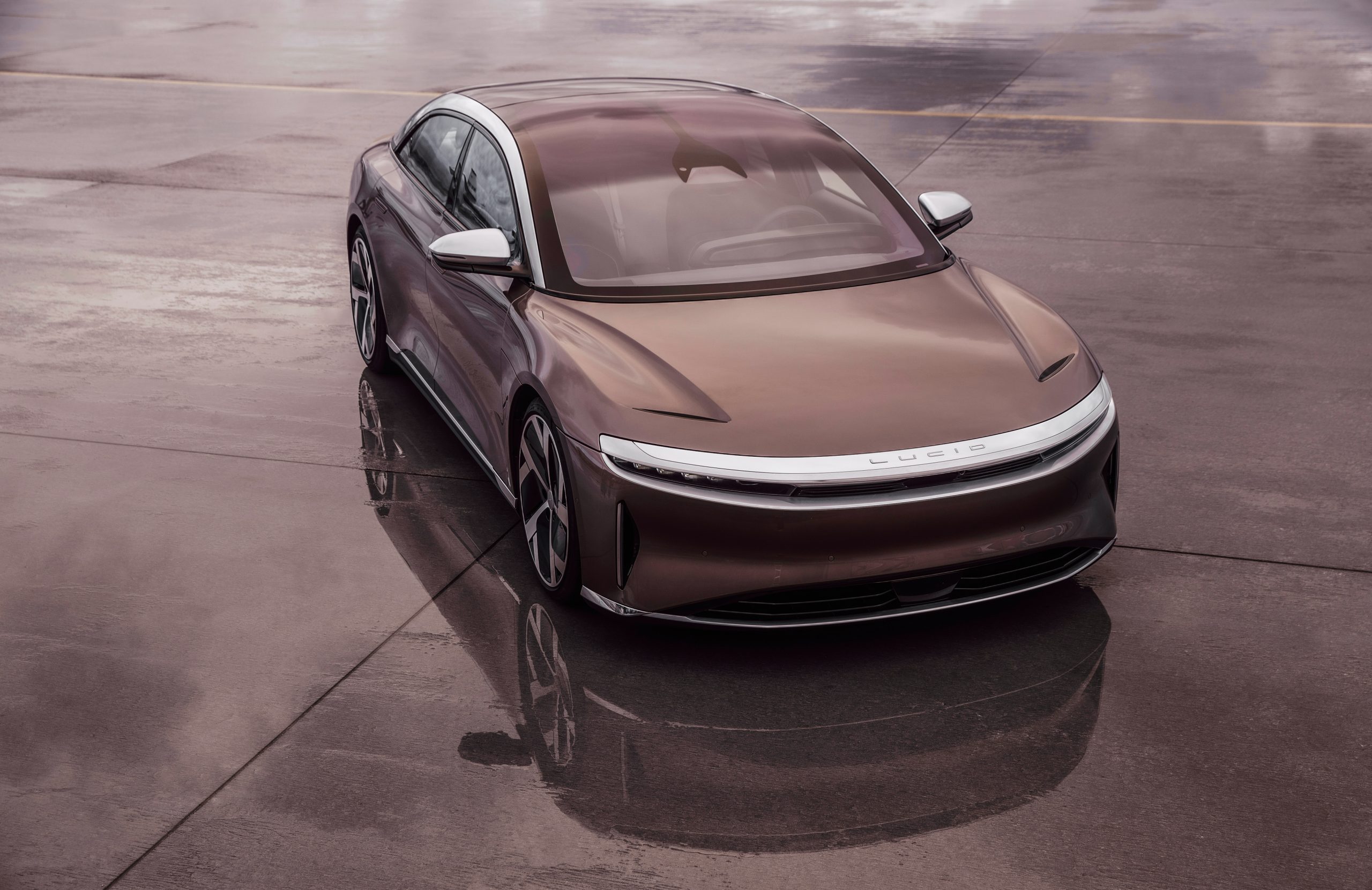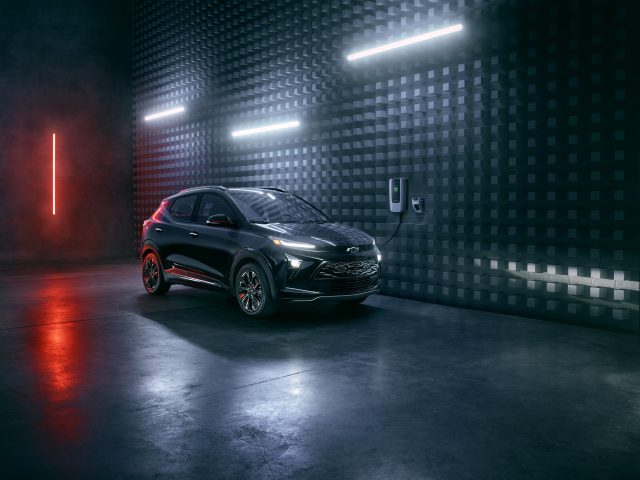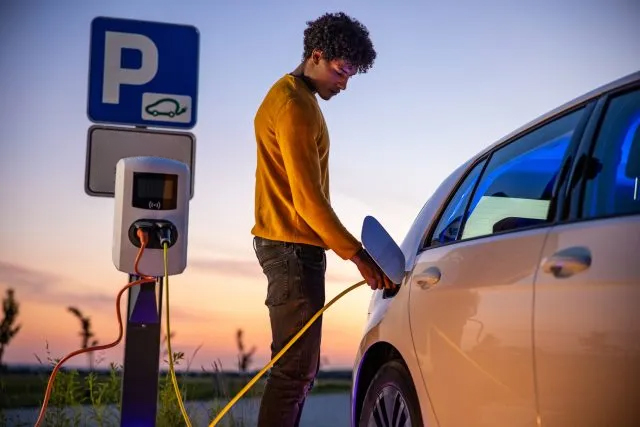A recent AAA survey of electric vehicle owners found that nearly all (96%) would buy or lease another the next time they were in the market for a new car. And word has spread: Sales of EVs through the first five months of 2021 grew 150% compared to the same period last year. Even President Joe Biden voiced his support of the green technology by setting a national goal for EVs to make up half of all new vehicle sales by 2030.
Certainly, there could be no better seals of approval. Yet while buying electric cars has grown exponentially over the years, it still lags far behind that of traditional gas-powered cars. As of 2020, there were nearly 1.8 million EVs registered in the U.S., according to the Pew Research Center, three times as many as in 2016. That may seem like an impressive growth until you compare it to the 280 million cars in operation across the country. Indeed, EVs represented just 2% of the new cars purchased in the U.S. in 2020.
“Although 40 million Americans have shown interest in buying electric for their next car, actual adoption is happening at a much slower rate,” said Greg Brannon, AAA’s director of automotive engineering and industry relations.
The gap between interest in buying electric car and owning an electric car begs the question: What are the hurdles preventing the widespread adoption of EVs, and, more importantly, are they capable of being cleared?
Upfront Cost
There’s no getting around it: buying electric cars costs more, at least initially, than gas-powered cars.
The high cost is largely a byproduct of the expensive process of manufacturing EV batteries. Fortunately, battery prices are dropping precipitously. Bloomberg found the average cost to be around $130/kWh as of late 2020, whereas they cost more than $1,000 just 10 years ago. The news outlet predicts batteries will drop to an average of $100/kWh by 2023. This number would represent an important milestone because at $100/kWh per battery, Bloomberg estimates that EVs can be manufactured and sold to a mass market at the same price as gas-powered cars.
The better news for potential EV owners is that the cost of the vehicles is already coming down. The average transaction price for all new vehicles in June 2021 was $42,282, according to Kelley Blue Book. The average transaction price for all electric vehicles was $49,766.
If consumers are able to overcome the initial higher costs, they should be able to make up that difference, if not surpass it, as EV ownership generally costs less than gas-powered cars. The money starts to come back in the form of tax credits. A federal tax credit of up to $7,500 per EV may be available depending on the model of EV as well as the owner’s tax liability. State governments also offer varying tax credits and other incentives that can further reduce the cost.
EV drivers will see additional savings over the lifetime of their ownership, as these vehicles cost less to both maintain and operate. (EVs don’t require oil changes or air-filter replacements, for example.) AAA research found, if maintained according to the automakers’ recommendations, annual EV maintenance costs $330 less than that of gas-powered cars. Then comes the all important factor of “fuel.” While electricity does cost money, it pales in comparison to the price of gasoline. As such, the power required to drive 15,000 miles per year in an EV costs an average of $546, according to AAA, less than half the price of the amount of gas required to travel the same distance.
All told, AAA found the total cost of an EV over five years and 75,000 miles of driving to be less than $600 more than owning a comparable gas-powered car.

Range Anxiety
A recent automotive survey conducted by Deloitte listed driving range to be the biggest concern amongst U.S. consumers regarding all-battery-powered electric vehicles.
This is one problem that, although valid, shouldn’t pose the level of concern that it does. While limited driving range used to be a major issue — not too long ago, it was difficult to find an EV that could travel more than 100 miles on a single charge — it’s becoming less so with each passing year. Today, there are numerous models that can travel 200 miles. Tesla cars, including the best-selling Model 3, feature batteries capable of more than 300 miles. The soon-to-be-released Lucid Air boasts a range of 500 miles.
Range anxiety is likely an effect of drivers simply overestimating how much power they really need. The previous year’s Deloitte survey found the majority of consumers expected EVs to travel more than 200 miles per full charge even though they traveled an average of 27 miles per day. “Range anxiety is generally only a concern to people who don’t drive electric,” said Anja van Niersen, CEO of European EV charging network Allego.
Be that as it may, driving range is still an issue for those who don’t have access to readily available EV chargers, which points to a much more significant barrier to widespread electric car adoption.
Lack of Infrastructure
The lack of public charging stations may just be the most significant hurdle to the widespread adoption of EVs in the U.S. The problem is most notable in two areas. First is with potential EV owners who don’t live in a single-family home, where most EV drivers charge their vehicles. Those who live in apartments don’t have this luxury and therefore have to charge their vehicle elsewhere. This can become a rather burdensome chore after time. Furthermore, apartment property owners are often hesitant at installing such infrastructure as it may be cost prohibitive.
Allowing the use of common outlets also poses problems. Because EV charging consumes more energy than most other residential uses, property managers would likely want residents to pay the electrical costs. This would require devising a way to monitor how much power is being used by each resident.
Regardless of living situations, public infrastructure is needed for all EV owners looking to make long-distance trips. There are more than 43,000 public EV charging stations in the United States, according to the Department of Energy. (If that seems like a large number, consider that there are nearly three times the number of gas stations.) But a 2019 study by the International Council on Clean Transportation found that this is just a fraction of the infrastructure needed. It estimated that 10,000 more charging stations will be required by 2025 to support EVs traveling between cities.
While EV infrastructure has a long way to go, local and federal governments appear committed to the trek. In 2019, two-thirds of U.S. mayors voiced their support of improving infrastructure even at the cost of additional parking space. More recently, a proposed trillion-dollar federal infrastructure bill is allocating $7.5 billion to fund the installation of 500,000 public charging stations across the country. If enacted into law, the legislation would be the federal government’s first-ever investment in EV chargers and, maybe, a sign of things to come.
Interested in purchasing an electric – or gas-powered – vehicle? Let AAA help get you in the perfect car for the right price with a low-interest auto loan.
Visit AAA’s Electric Vehicle platform for more information on these cars of the future.
165 Thoughts on “Why Aren’t More People Buying Electric Cars?”
Leave A Comment
Comments are subject to moderation and may or may not be published at the editor’s discretion. Only comments that are relevant to the article and add value to the Your AAA community will be considered. Comments may be edited for clarity and length.



















That EVs will predominate is inevitable as battery development continues. Already Kia has a car that charges in 18 minutes. It will happen; you will be able to recharge a car in the same amount of time it takes to gas up. There are graphene batteries in the works that charge much faster than the lame lithion ion batteries and don’t need to be cooled and are much lighter. All of the big issues will be solved. But–for now, if you own your own car, have no payments, and don’t need a new car, it will cost you plenty to go electric. Do the math. If you want to be an early adopter and help cut down on emissions, have at it. I think a bigger question is this: how many more cars can be accommodated on the roads in urban areas? How much more sprawl? Is it really necessary to have a ginormous front yard with acres of grass and then spend half the day mowing it with a John Deere? I don’t worry about the planet; it will survive long after we’re gone. But how long does our species have? We should take a longer view of things, even if things never turn out the way we expect them to.
This article makes things look too simple. Most families only have one car and that car needs to be multifunctional. SUV’s are great for this function. In Chicago area. Millions park their cars outside both in the city and suburbs. Batteries are not good in cold or hot. Just a fact. Too many things degrade distance like speed and cargo. Yes I know this happens with gas. Using a public charger just sucks. The more people who buy EV cars, the more EV cars will fall from popularity. You will see this happen. Public transportation is useless and has been for decades no matter how hard the sell is for this. We need something better than just a car that runs on batteries. They have applications. But not for millions and millions of people. EV cars will not replace gas for most. Argue if you like. As an engineer only results matter. EV cars will never replace gas cars fully.
1) electric cars are not convenient. A gas car you can fill up in a few mins. A electric car takes 30 min to 1 hr on a fast charger and 8hr on a level 2 charger and up to 48 hrs on a level 1 charger.
2) many people park on the street and not always in front of their home.
there isn’t anyway they can charge over night while they sleep.
3) Electric cars a not environmentally friendly .Take a look at what a lithum mine does to the countryside.Also it takes massive amounts of water in processing the lithum.
bad idea for the united states as the united states has very little lithum
4) our electrical infrastructure can barely handle our power needs now. Many coal,oil,and nuclear power stations would need to be built.
5 most people dont realize the weight of a electric car. They need special tires that can handle the added weight of the cars due to the batteries. Tires and brakes will wear out much faster. Tires for a tesla run between 300 and 500 dollars each on average.
6) batter replacement cost is around 3000 dollars or more. Might not be an issue for the first buyer but would a prospective buyer purchase a older electric car knowing it will need a battery at some point.
7) people should consider all the facts and not just that there is no tail pipe emission and no gas to buy.
I will only buy an EV vehicle that uses hydrogen fuel cells instead of batteries, and that only when we build a network of hydrogen refill stations that is big enough.
Here’s why I am not buying an electric car:
1.) The manufacturing of the battery causes more pollution then driving a electric car could ever resolve.
2.) I don’t want to have to sit somewhere for long periods of time to charge up while traveling (I see guys at gas stations charging up who were there when I got there, looked like they had been there a long time, and were still sitting there after I gassed up, cleaned all my windows, checked my oil, shopped, and went to the bathroom).
3.) The batteries have a shelf life that means more pollution to manufacture the replacement puls a hefty mechanic bill, where I can buy and replace a regular battery on my own in less then an hour.
4.) The batteries require proper usage maintenance – if you constanty overuse and overcharge it the battery life is quickly diminished so you have to always be aware of how you are using and charging.
In comparrison for my reguar car I only have to do the periodic maintenance of checking the oil and water with an occassional tune up.
1. Not true.
2. You don’t sit while your car fast charges. You eat, shop, use the restroom. You can’t do anything else while pumping gas into your car.
3. EV batteries generally last the lifetime of the car, and have long warranties. They are not comparable to your gas car’s lead-acid battery.
4. This is not as difficult as it sounds, nor is it so different from a gas car. Driving on fumes often is not good for a gas car. Charging all the way up and draining it all the way down is not how anyone typically drives an EV. The car has a setting that limits how far you charge for everyday driving, easily overridden for the occasional road trip.
I hardly call that maintenance. My electric car has many fewer moving parts than your gas car. No oil changes or tune-ups necessary. Just rotate the tires.
Maybe families should move back together for a more sustainable life and communities, minimizing travel period. Look at the mental illness in our society due to transience and disconnection. COVID brought that reality home.
I haven’t heard so many half-baked excuses and arguments since I last read about the antivax world. I would say let’s not politicize EVs and sound environmental practices, but that ship has sailed (or motored off).
What would it take to do battery swapping? Yes, that would making ‘refilling’ and EV faster but how many people today fill up at a station? How much room does the station need to store all those swapped batteries while they are recharged? How do I ensure I get a good one? They will need the ability to test these batteries and ensure a full charge. What happens to the energy that is still in the battery if I swap before the pack is ’empty’? Will I only be paying for the energy above what I drop off in the previous battery or will I always be paying for a ‘full tank’? This may cause many to push the packs to use up most/all of a charge to get their monies worth. This will degrade them faster. If it takes 30-40 minutes to fully charge a car battery at a level 3 charger and let’s add 5 min to test it for a total of 35 – 45 min/ pack. If it takes 3-5 min to fill up a car(published average) and a station has 4 pumps(very small station), they can fill 9-15 cars over 45 min period PER PUMP. these EV stations would need at least 15-20 batteries available per swap out bay (some spare in case one goes bad or cannot take a charge, etc.). Who is going to build that infrastructure, deliver that much energy and deliver batteries/pickup spent ones so that people can stop at a station and pick up a fully charged pack within 3-5 mins? What do you think that is going to cost? What if they offer various sizes of batteries? Now you will need that many times the number of of sizes. What do you do with your car if they decide to change pack configurations or your configuration is not ready at that EV station? OK, they offer you a chord to charge. Or maybe the ask you to leave it and they offer you a gas powered loaner!! So to replace 4 pumps, you will need to have on hand 60-80 batteries that are the size of the space between the wheels of your current car/truck/SUV. That is going to take a lot of room. Also, what happens if something goes wrong? Lithium loves to burn. 60-80 batteries for the 4 bays all on charge at various states of charge will create one hell of a fire.
Battery swapping would be cool, because you wouldn’t have to pay for the new Tesla battery @ $15K. Where do these batteries go anyway in their afterlife?
According to a NY times article, the average US household has 2.28 cars. 35% have more than 3. If each 220V charger requires 30 amps, that would be at least 90 amps just for 3 cars and 120 amps for 4. These homes will use more electricity at night than during the day and that is just for their cars. What about the appliances and central air? Would some overload a 150 amp panel at night? How do you get cars close to 3-4 chargers? Not everyone has a 2 car garage and even if they did, that would require at least two outdoor chargers. What do you do if your daily one way commute is 20+miles? Work requires longer hours, commute time and all, you might only get 7-8 hours per night to charge. Most job will not litter their parking lots with charging stations anytime soon. You might find yourself with needing to not drive on a weekend day or stop at a fast charger every week. We barely have enough time now on the weekend to accomplish all we do and now we will need that time just to charge a car. Sure, EV need less maintenance but they require more of your time. How much does that cost you? Let’s add the cost to add these chargers to a home, add the amps to the house and these chargers will take time to charge a car from 20% to full. From my experience with lithium batteries it has been stated that lithium batteries can only take so many recharge cycles regardless if that is from 20% or 80% to full. Each charge decreases the amount they can take the next time. If you look at Engineering Explained on YouTube, he did a cross country trip with an BEV. I think it took an extra 8 hours to accomplish. Time is money. Why would I want to incur an extra half a day for a cross country trip? Solar impacts the land requiring large area to accumulate a low energy dense medium – sunlight and the energy currently absorbed is only 20 or less of the total. All those solar panels displaces plants and animals, kills raptors and other soaring birds. Same is true for wind turbines.
You’re very unlikely to need to charge all cars at once, just like you’re very unlikely to need to gas up ALL of your cars at once.
I don’t understand a lot of the electric car comments. To be clear I am a huge proponent of clean air, and clean water. Fossil fuels are terrible for the air, and water quality. The production of fossil fuels, transporting fossil fuels, and burning fossil fuels are all very poor for the environment with the exception of burning natural gas. Electricity comes from many sources, and some are much cleaner than others. I do also have solar panels on my roof, and I own a community solar farm producing credits on my friends, and family members utility bills at a cost less than buying it directly from the utility company.
I have a 2015 Model S, and my wife has a 2016 Model X. The Model S used could be purchased for less than 50K today. It’s not cheap, but it is actually a better car today than when I bought it because of the software updates.
Cost of travel for me is very little. I have a time of use meter and at night it costs 3-5cents per kwh. My car has an 85kwh battery. To fill it at home it costs me about $4. This will get me about 180 miles in the winter, and 250 miles in the summer. It costs me about $1 in electricity to drive 50 miles.
In terms of performance, and range the only negative I have had is on those long trips. Daily driving is actually less inconvenient since I don’t have to go to a gas stationg, and just plug in in my driveway, or garage. The fast chargers are free for me since we have free supercharging for life, but they charge at a rate of 100 to 350 miles of driving per hour of charging. It charges fastest if the battery is warm, and almost empty.
The last comment stated that driving 1200 miles would take an extra 3-4 days. That is nowhere near close to reality. The car will actually tell you how long it will take using it’s navigation system. I live in Central New York. Google maps says it would take me 20 hours to get to Dunedin, and the car navigation says 26 hours. It would take about 6 hours longer or 30% longer using my car. The newer electric vehicles charge faster, and have a larger battery so they would take significantly less time than 26 hours to do the same trip.
There was a comment that the plug in hybrid was better than battery electric vehicle. That is true with range anxiety, but not maintenance, space in the vehicle (the front trunk adds space), or cost of energy since electricity is cheaper than gas most places.
In stop and go traffic the battery uses very little energy, and is much more efficient than a gas car. Most of the energy used in that scenario is heating or cooling the cabin.
There was a question about risk of the car catching fire. Gas cars catch on fire more frequently than electric cars. There are about 150,000 fires from gas cars in the US every year. After there was news about a few Teslas catching fire I starting asking people, and spoke to quite a few people who knew somebody who had a car fire, or had one themselves in my small area of 250,000 residents.
There is a very extensive fast charging map on plugshare, and the Tesla supercharging map is at supercharge.info.
On Cape Cod electricity cost 25c/kw making gas cheaper until $3.35 a gallon.
IF you only drive locally an EV might make sense BUT I drive to Dunedin Florida, 1200 miles. I don’t want to have to take 3-4 days longer just to charge my EV from a station powered by Fossil Fuels. To me a Prius Hybrid or such makes far more sense, 58 miles to a gallon AND if they would take the damn Ethanol out of the gas we would get FAR better mileage. The Corn produced Ethanol is a payoff to the Farmers but it reduces your mileage by over 10%, so you actually use MORE fuel to got the same distance, as Mr. Spock says, “ILLOGICAL”.
In 2028 we considered a Tesla X for our next vehicle. It was a quiet vehicle that had enough room, speed and was a vehicle that electronically was up to date everyday. The range of the battery was what stopped us. A visit to see relatives on a great day could be 10 hours one way too n a gas vehicle with one stop for fuel. With the range of 300 miles and my trip being 620 miles, the vehicle charging added at least an hour to ride if you could find a charging station where we would stop for lunch. I have now seen a lot more public charging stations in my area but it’s not like a gas station
How did EVs do down in Texas last winter when the grid went down for days?
Price is still a consideration. You estimate $600 more if you drive 15k miles a year. Then you say most people drive an average of 27 miles/day. That works out to less than 10k miles per year, negating 5k miles worth of fuel savings per year.